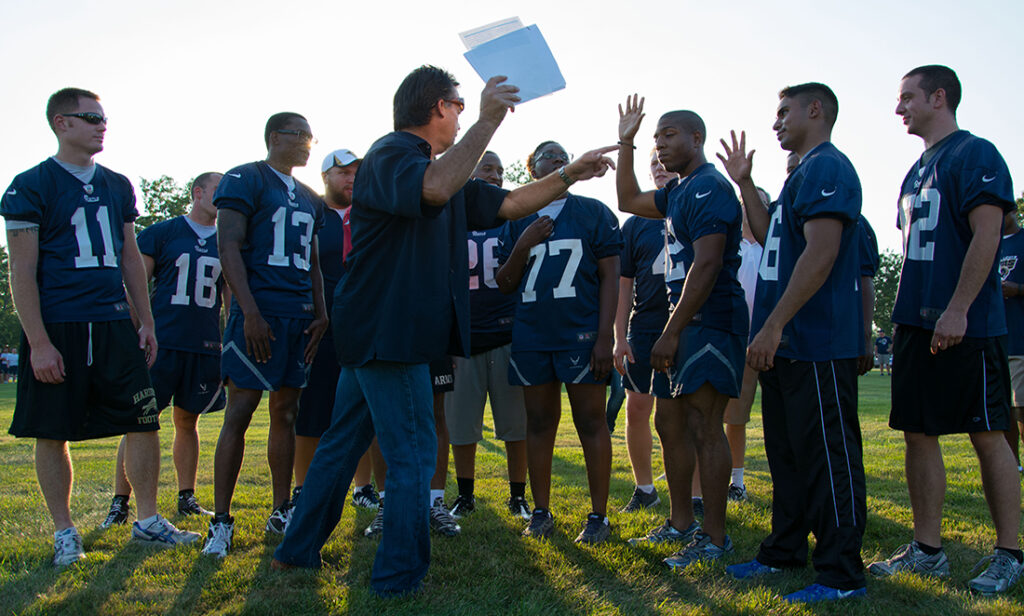It takes a village to raise a champion.
What we see is Usain Bolt smiling his way over the finish line. What we’re actually witnessing is the influence of a huge team including nutritionists, psychologists, medical personnel and more.
Of this support team, the coach undoubtedly wields the most influence. What they do and how they act can, on many levels, determine whether their athletes play by the rules or not.
It’s not unheard of for coaches to directly suggest that their athletes engage in doping. In extreme cases, they drug athletes without their knowledge.
Coaches can also have a more subtle effect. They can indirectly influence an athlete’s intentions via the motivational atmosphere they create. A ‘win at all costs’ attitude may see athletes purposefully taking banned substances. It can also result in more inadvertent doping, when athletes fail to properly check a supplement only to find later that it is banned.

There is sport psychology research that demonstrates the influential nature of the coach’s role. In spite of this, Professor Nikos Ntoumanis says that coaches aren’t normally attracted to anti-doping programmes.
“They perceive that anti-doping is an issue that is primarily for athletes and for medical personnel within teams,” he says.
Nikos and his team at Curtin University’s Physical Activity and Well-Being (PAW) Lab knew they needed a way to educate coaches. They needed an approach to help coaches understand the impact of motivation on athletes’ doping-related thoughts and decisions and prepare the coaches to have the necessary supportive conversations.

“They perceive that anti-doping is an issue that is primarily for athletes and for medical personnel within teams.”
Thus began CoachMADE, the only coach-centred anti-doping intervention ever funded by the International Olympic Committee.
FLEXING THE MOTIVATION MUSCLE
CoachMADE aims to give coaches the confidence and skills to communicate with athletes about anti-doping in ways that are motivationally supportive.
It’s a research project—a trial that tests between two types of anti-doping education. The first is a standard approach based on material produced by the World Anti-Doping Agency (WADA). The second is a ‘motivationally embellished’ approach to anti-doping.
“Just to give you an example, a coach might use very pressurising or intimidating language to communicate with their athletes. For example, they might say, ‘If I ever catch you taking performance-enhancing substance, I’ll throw you out of the team’,” says Nikos.
“Or they could be more open to their athletes and discuss with him or her any concerns or ideas they have. For example, an athlete might go to their coach and say, ‘I’ve seen a lot of other athletes having protein shakes and I’m thinking of starting to take the supplement. What do you think?’ If the coach is using motivationally supportive language then the athlete will be more open towards their coach and more likely to discuss the issues related to supplement use.”
“If the coach is using motivationally supportive language then the athlete will be more open towards their coach...”

Coaches participating in the programme received training in standard anti-doping education versus motivation-embellished anti-doping education, which contrasted the two different styles of communication. Then, over several weeks, they put what they had learned into practice with their athletes.
Questionnaires were administered before and after the programmes, and both the coaches and their athletes were asked to fill them in. More than 120 coaches and 1000 athletes were surveyed across Australia, Greece and England.
These questionnaires measured the coaches’ confidence in delivering anti-doping education and their attitudes towards doping.
Their athletes responded to questions investigating their willingness to take prohibited substances, their attitudes towards doping, as well as some morality variables. They were also able to confidentially report on any substances they were taking, banned or not.
NO ATHLETE IS AN ISLAND
Whether CoachMADE will significantly impact an athlete’s intention to dope, we can’t yet say for sure. Data collection only recently finished in Australia, but researchers are yet to wrap up in the northern hemisphere.
But Nikos is optimistic. “Those who came to the programme were very positive and very enthusiastic about it, and we had very little attrition, which shows to me that, once they actually experienced the programme, they benefited from it and wanted to stay with us.”
What next, once the results are in? Nikos says he hopes the intervention will be adopted and distributed by anti-doping educators such as the Australian Sports Anti-Doping Authority. It is hoped that the intervention will help curb doping in WA and around Australia.
Humans have tried to enhance their athletic performances with supplements since ancient times. Best bet is that they’ll continue to do so in the future.
But we now know that doping is more than an isolated choice made by an individual. CoachMADE gives coaches the ability to talk with their athletes and to help them be the best (clean) competitors they can be.








